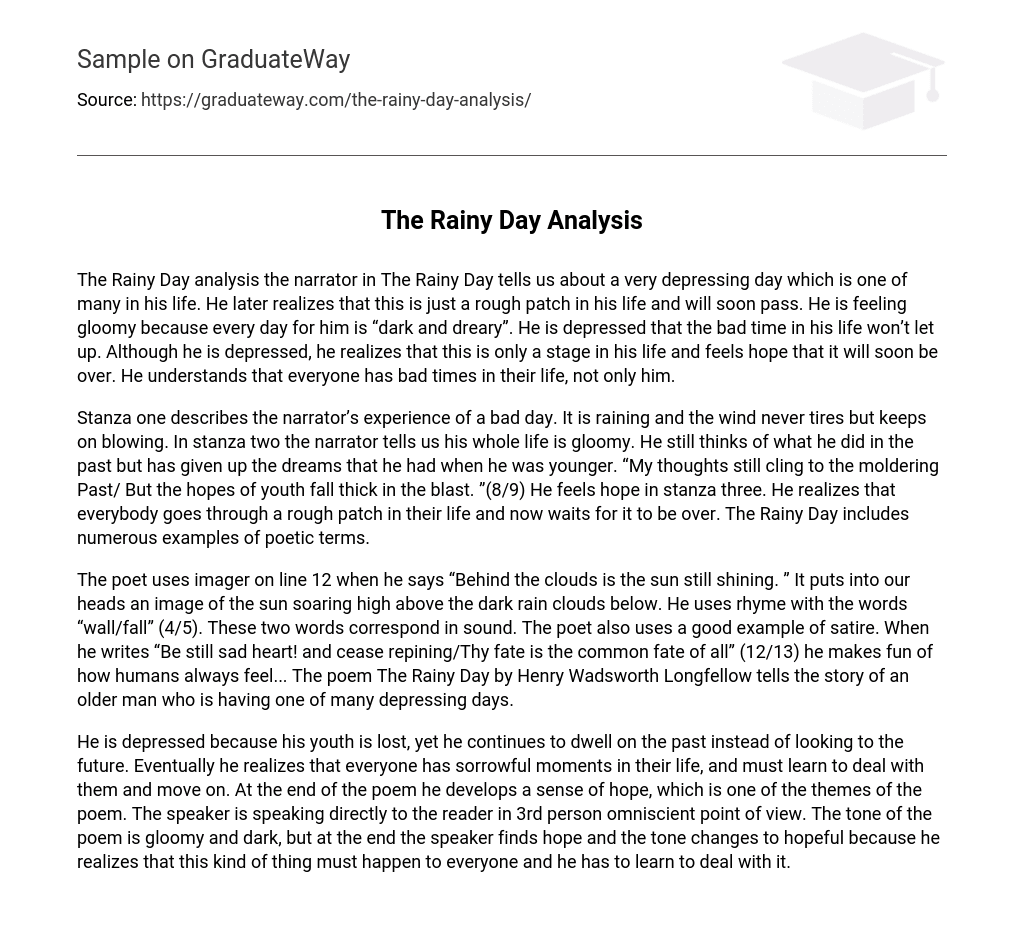The Rainy Day analysis the narrator in The Rainy Day tells us about a very depressing day which is one of many in his life. He later realizes that this is just a rough patch in his life and will soon pass. He is feeling gloomy because every day for him is “dark and dreary”. He is depressed that the bad time in his life won’t let up. Although he is depressed, he realizes that this is only a stage in his life and feels hope that it will soon be over. He understands that everyone has bad times in their life, not only him.
Stanza one describes the narrator’s experience of a bad day. It is raining and the wind never tires but keeps on blowing. In stanza two the narrator tells us his whole life is gloomy. He still thinks of what he did in the past but has given up the dreams that he had when he was younger. “My thoughts still cling to the moldering Past/ But the hopes of youth fall thick in the blast. ”(8/9) He feels hope in stanza three. He realizes that everybody goes through a rough patch in their life and now waits for it to be over. The Rainy Day includes numerous examples of poetic terms.
The poet uses imager on line 12 when he says “Behind the clouds is the sun still shining. ” It puts into our heads an image of the sun soaring high above the dark rain clouds below. He uses rhyme with the words “wall/fall” (4/5). These two words correspond in sound. The poet also uses a good example of satire. When he writes “Be still sad heart! and cease repining/Thy fate is the common fate of all” (12/13) he makes fun of how humans always feel… The poem The Rainy Day by Henry Wadsworth Longfellow tells the story of an older man who is having one of many depressing days.
He is depressed because his youth is lost, yet he continues to dwell on the past instead of looking to the future. Eventually he realizes that everyone has sorrowful moments in their life, and must learn to deal with them and move on. At the end of the poem he develops a sense of hope, which is one of the themes of the poem. The speaker is speaking directly to the reader in 3rd person omniscient point of view. The tone of the poem is gloomy and dark, but at the end the speaker finds hope and the tone changes to hopeful because he realizes that this kind of thing must happen to everyone and he has to learn to deal with it.





